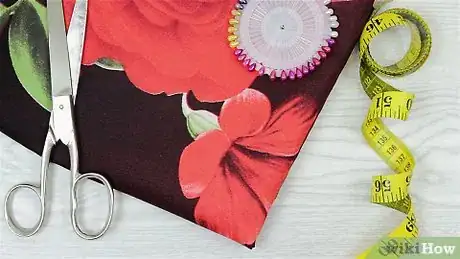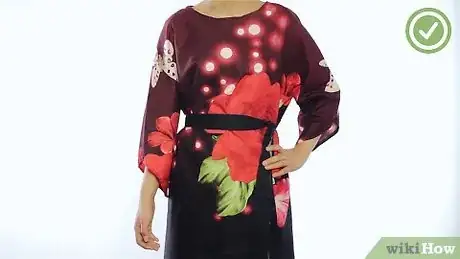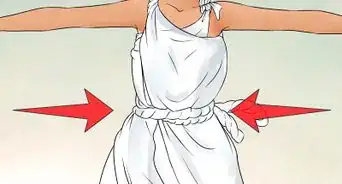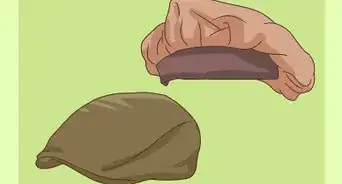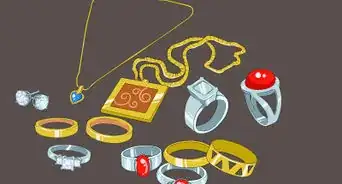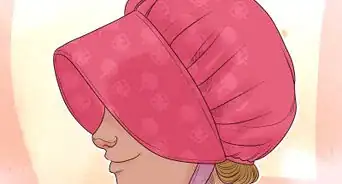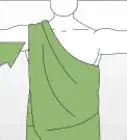X
wikiHow is a “wiki,” similar to Wikipedia, which means that many of our articles are co-written by multiple authors. To create this article, 14 people, some anonymous, worked to edit and improve it over time.
The wikiHow Video Team also followed the article's instructions and verified that they work.
This article has been viewed 161,102 times.
Learn more...
Need a Renaissance Fair costume that's cheap, quick and easy to make? A t-tunic is a simple shirt that can be made with few materials and little to no skill yet still look great. With it you can blend in at a fair without spending a fortune. It's also easy to modify and adjust for more advanced costumes.
Steps
-
1Acquire some fabric. You'll need a few yards, depending on your size. An old bedsheet or blanket could be used instead of new fabric. During the Middle Ages, lots of different colors were used, so don't be afraid to buy bright yellow, red, or any other color you choose.
-
2Fold the fabric in half width-wise. Lots of fabric is already folded width-wise when you buy it. Fold it in half again, length-wise this time. Now the fabric should be in fourths. Make sure it is smooth and flat, and the edges are all matched up.Advertisement
-
3Prepare to trace the pattern on. Use a loose fitting t-shirt to create the pattern. Do not use a tight-fitting shirt, or else you may not be able to get your t-tunic on. Fold the t-shirt in half lengthwise, and lay it on the corner of the fabric so that the fold in the shirt is right up against the fold in the fabric. The top of the shirt should be up against the side of the fabric with two folds.
-
4Change the design. You probably don't want your t-tunic to be shaped like the t-shirt. Using the t-shirt as a guide, design the look you want your tunic to have. You can make the neck bigger, the sleeves longer, the sides wider. Most t-tunics are knee-length, but you can make yours shorter or even stretch all the way to your feet. It's common to have the sleeves and bottom flair out a bit. Don't make your design smaller than the t-shirt in any place It will be hard or impossible to get on. Trace on your design with a pencil.
-
5Pin the fabric together along your outline so it doesn't come apart when you begin to cut.
-
6Cut out the outline an inch or two outward from your marks. The extra fabric will be used to make the seam. Don't cut the side or top, where the folds are. When you are done, unpin and unfold the first fold. You should have a single shirt-shaped piece of fabric, folded at the shoulders.
-
7Sew the sides and sleeves together. Be careful not to accidentally sew the arm or neck holes. Make sure you are sewing it inside out if your fabric has a front and back, otherwise your seams will show. To keep the fabric from fraying, sew a hem along the other sections, or at least a simple seam.
-
8Turn your tunic right-side out. Congratulations, it's now complete.
Advertisement
Community Q&A
-
QuestionDo people still wear this?
 GarrettTop AnswererSure they do. Renaissance fairs are still a fairly common event each year, and making a T-tunic is easier and less expensive than designing a full chain-mail suit of armor. T-tunics can also be used in creating cosplays, which are also rather prevalent in today's pop culture.
GarrettTop AnswererSure they do. Renaissance fairs are still a fairly common event each year, and making a T-tunic is easier and less expensive than designing a full chain-mail suit of armor. T-tunics can also be used in creating cosplays, which are also rather prevalent in today's pop culture. -
QuestionWhy aren't these still more in style? They're amazing. Tunics, cloaks, and chain mail- I love them so much and I know I'm not the only one.
 LizzieCommunity AnswerThey are great, but style has evolved and more trends have been placed in today's society. However, if you enjoy the style you should wear them.
LizzieCommunity AnswerThey are great, but style has evolved and more trends have been placed in today's society. However, if you enjoy the style you should wear them. -
QuestionCould I wear plazoos or wrap skirts, and daisy chain necklaces?
 Community AnswerThat would be perfect, and try to go barefoot, or with sandals.
Community AnswerThat would be perfect, and try to go barefoot, or with sandals.
Advertisement
Things You'll Need
- A few yards of fabric
- Thread
- Needles
- A pencil
- Sewing machine or sewing needle
About This Article
Advertisement
